By a virtual show of hands, how many of us started our DIY careers by learning how to change oil? I can’t see you but I’d bet that a good number of motorcycle riders initially got their hands dirty with this humble task. Maybe it was the family car or truck. Maybe it was a dirt bike, ATV, or mini bike. Maybe it was simply handing a tool to an older relative.
But why do we do it? Why does oil need replacement? What is viscosity anyway? What makes motorcycle oil different from automotive oil? These are great questions. Even if you have been changing oil for years you may not know the answers. If you are new to DIY and you didn’t grow up working in the garage, you may not know the answers.
Either way, if you’re curious about oil, if you want to save money and help keep your bike running as long as possible, continue reading below for everything you need to know about changing the oil in a motorcycle.
Why Change Oil
Motorcycle oil has four jobs. Clean, cool, lubricate, and protect. With time and usage, oil loses its ability to perform these essential tasks. Air-cooled motorcycles are especially dependent on oil and its role in engine drivetrain health.
Notice I said drivetrain health, not simply engine health. That is a key difference between motorcycle oil and automotive oil. With motorcycles, oil is also in the transmission and clutch area. Motorcycle oil needs to balance engine protection with a clutch performance. Automotive oil only travels within the engine and since automotive applications typically strive for the absolute best fuel economy, automotive oil contains friction modifiers.
Simply put, car oil is too slippery for motorcycle use. Using automotive oil in a motorcycle will cause the clutch to slip and it may cause permanent damage to the clutch plates. Don’t spend a few hundred dollars on a clutch rebuild just to save a few bucks on the wrong oil!
Mileage isn’t the only factor that determines when to replace engine oil. Time is a consideration. Engines produce moisture, small amounts of unburned fuel can slip past piston rings and into the crankcase, and even oxygen can begin to impact engine oil’s ability to clean, cool, lubricate, and protect. Even when motorcycles see very few miles each year, regular oil changes are a must.
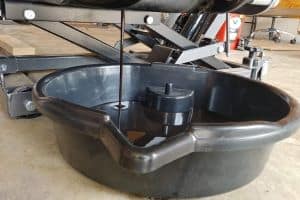
Oil drain pan
Oil Types
Motorcycles use conventional, synthetic, or synthetic blend oil. Synthetic oil has a few advantages over conventional oil including:
- Performance at very high temperatures
- Less viscosity change at low temperature
- Longer oil change intervals
- Better cleansing properties
Despite synthetic oil’s advantages over conventional, it isn’t always the best choice. Initial engine break-in is best using conventional oil. Also, synthetic oil may leak when running in older, high-mileage bikes that have always used conventional oil.
Some people believe that the smaller molecules in synthetic oil can find their way through old gaskets while other people believe that synthetic oil cleans so well, it washes away the gunk that acts as a pseudo gasket, causing leaks. Either way, if you have an older, high-mileage bike that has used conventional oil forever – switching to synthetic isn’t recommended.
How much does it cost?
Finally, there is price. The cost of fully synthetic motorcycle-specific oil is quite high. For riders who log serious miles, sticking to conventional oil could be significant savings.
Synthetic blends are a great compromise. They offer added engine protection and lubrication benefits without the premium price.
Oil also comes in quite a few different viscosities. Multi-viscosity oil is also an option. Viscosity is a measurement of the flow rate in a liquid. Higher viscosity oil is thicker is room temperature and handles heat very well. Lower viscosity oil is thinner at room temperature and still flows well in cold weather. The flip side to low viscosity oil is the lack of ability to maintain protection when very hot. Multi-viscosity oil has characteristics of both ends of the spectrum.
Oil Filter
An oil filter’s job is simple enough. To keep the oil as clean as possible for as long as possible. In addition to horsepower and torque, engines also produce dirt, debris, and metal shavings/fragments. These by-products mix into the engine oil and circulate through very small oil passageways. The filter traps this unwanted material to reduce the risk of damage.
Some motorcycles use a spin-on cartridge filter while others use a filter element behind an engine cover. Regardless of which filter type your bike uses, swap it out every oil change. The extra few dollars is a small price to pay for peace of mind.
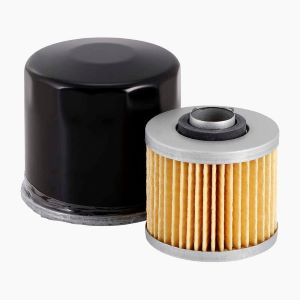
Spin on and cartridge filter
Tools and Supplies Required
- New oil and filter
- New drain plug O ring or gasket
- Oil pan
- Rags
- Service Manual
- Socket or Wrench for drain plug
- Oil filter wrench
Oil Change Procedure
- Warm up engine
- Remove drain plug
- Remove oil filter
- Replace O Ring or gasket on the drain plug
- Torque drain plug to specification
- Fill the oil filter with oil
- Double-check that the old oil filter gasket came off with the old filter
- Replace the oil filter and hand tighten
- Fill the engine with oil
- Run the engine for a few minutes
- Double check oil level on the dipstick
- Properly dispose of used oil
Follow your motorcycle’s service manual’s stated interval for replacing engine oil. Even if you don’t rack up huge mileage, change the oil and filter at least yearly. Most auto parts stores will recycle used oil as well as dealerships. That’s it, nothing to it. Stay tuned for the next installment of the In-Depth Maintenance Series!
You may also like: Winter Motorcycle Maintenance Series – Fork Oil Change
Want a professional’s opinion? Check out The Seasoned Wrench




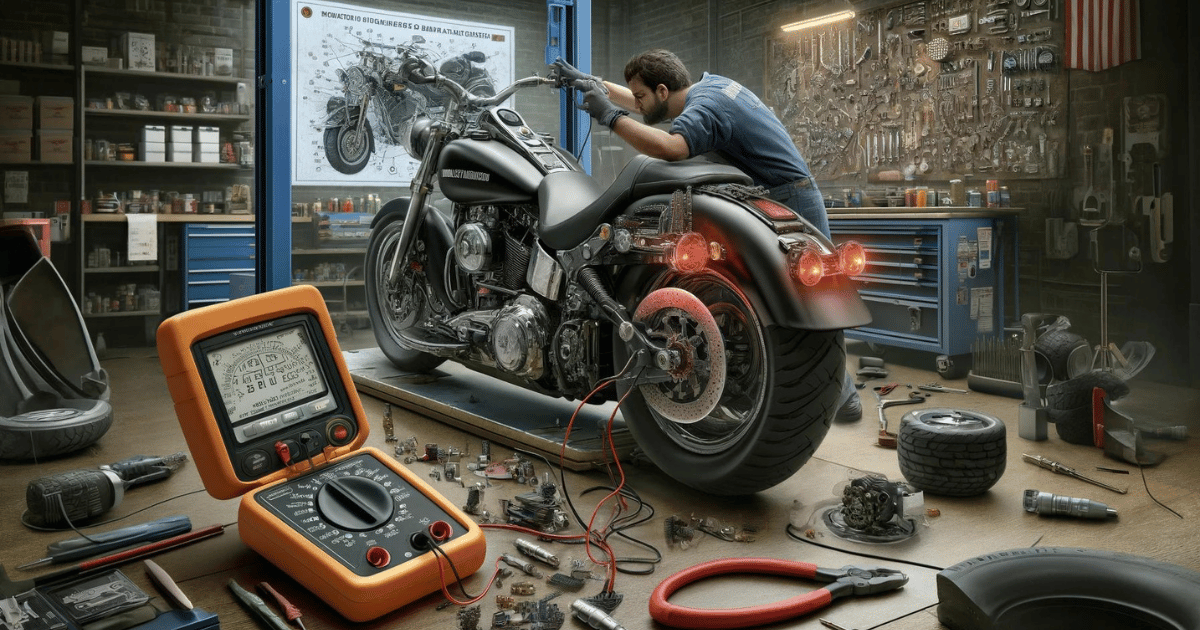
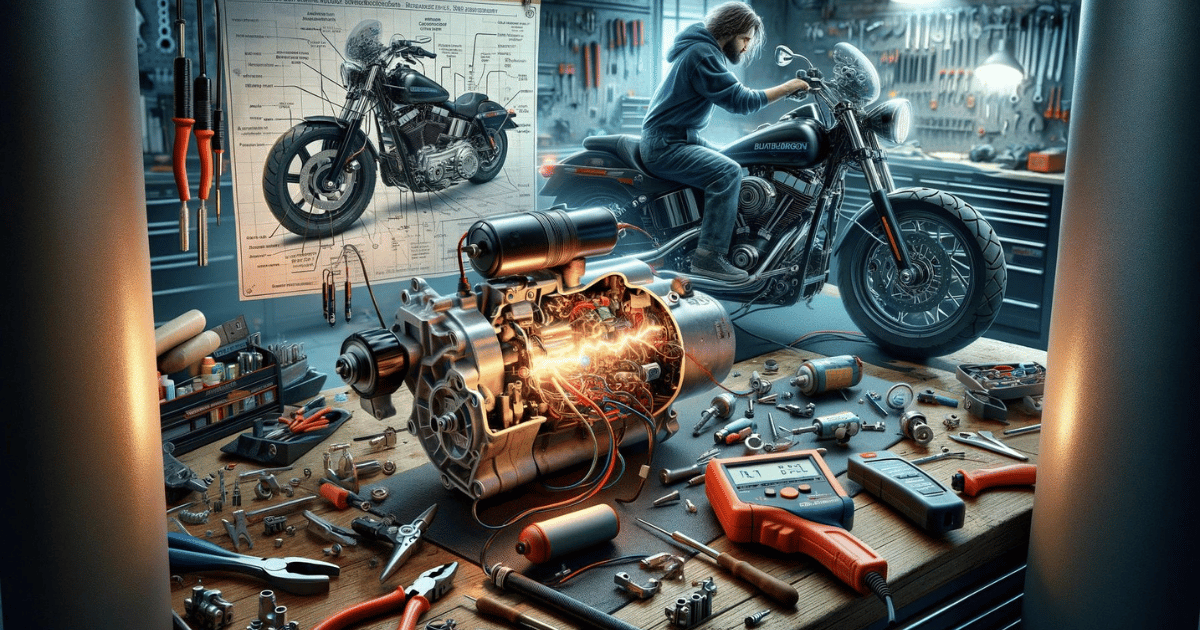
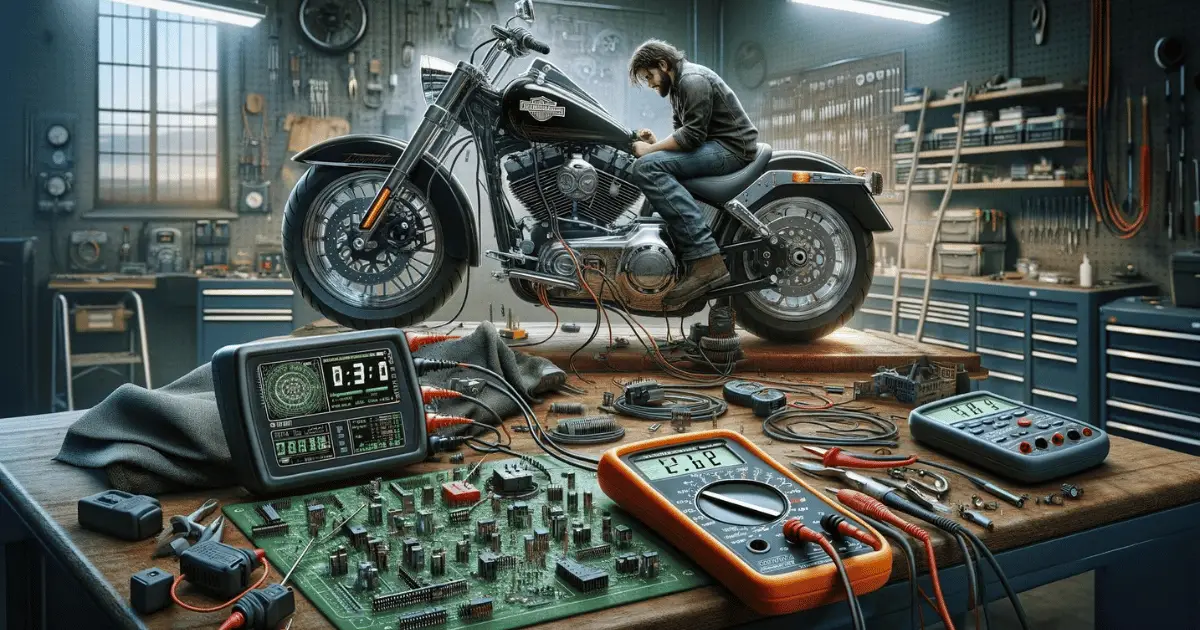
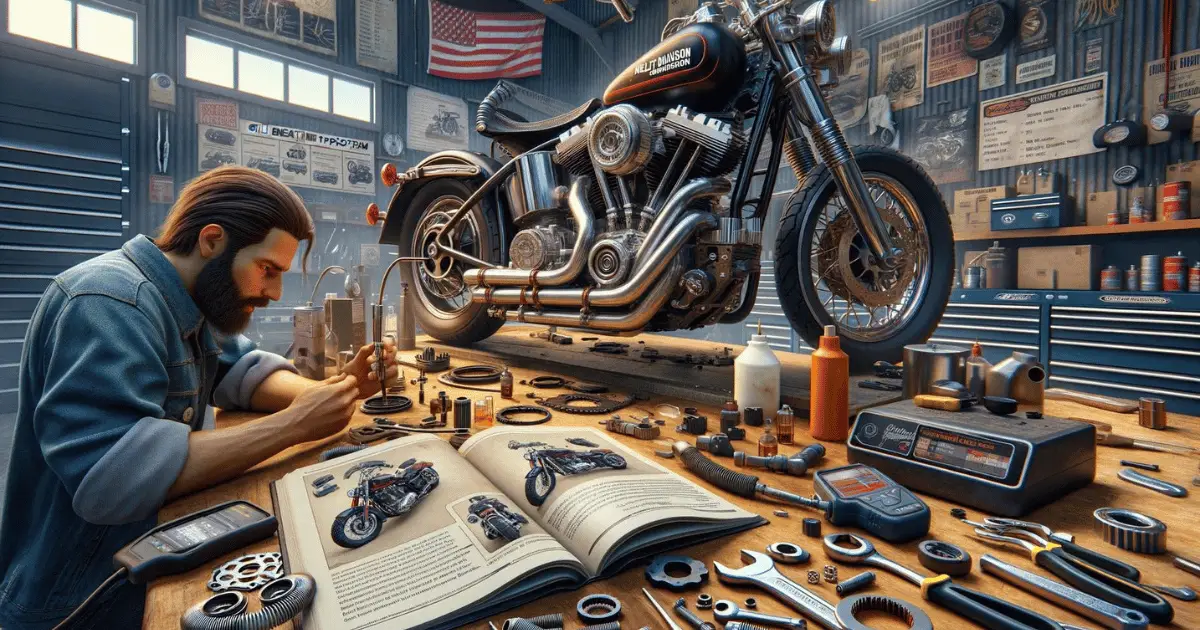
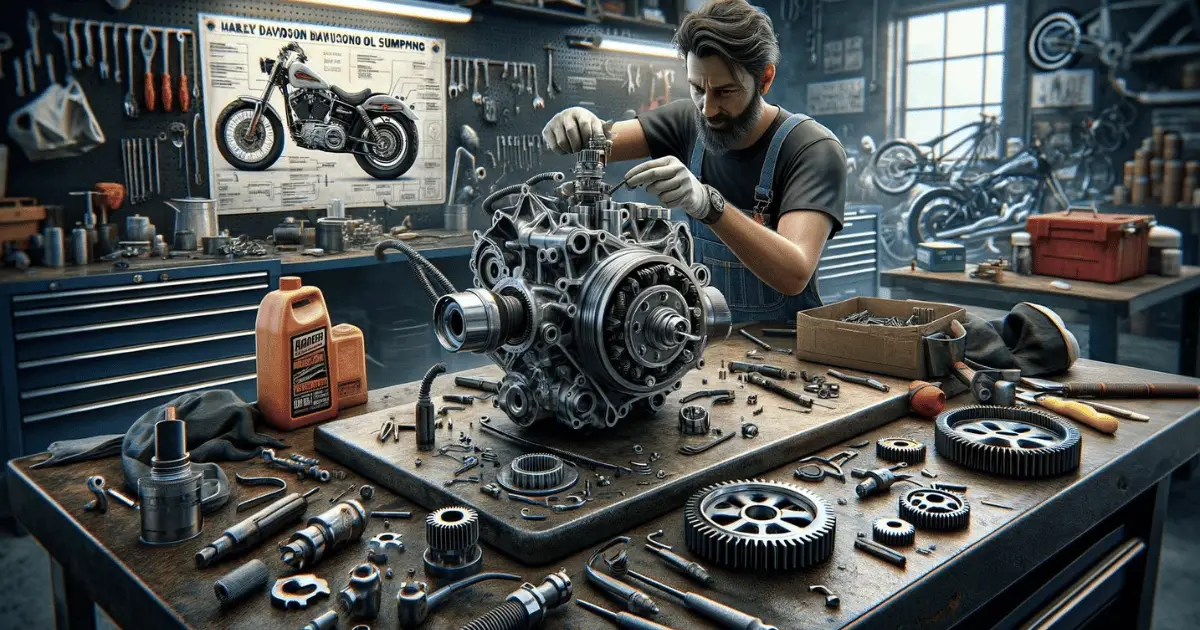
Leave a Reply
You must be logged in to post a comment.